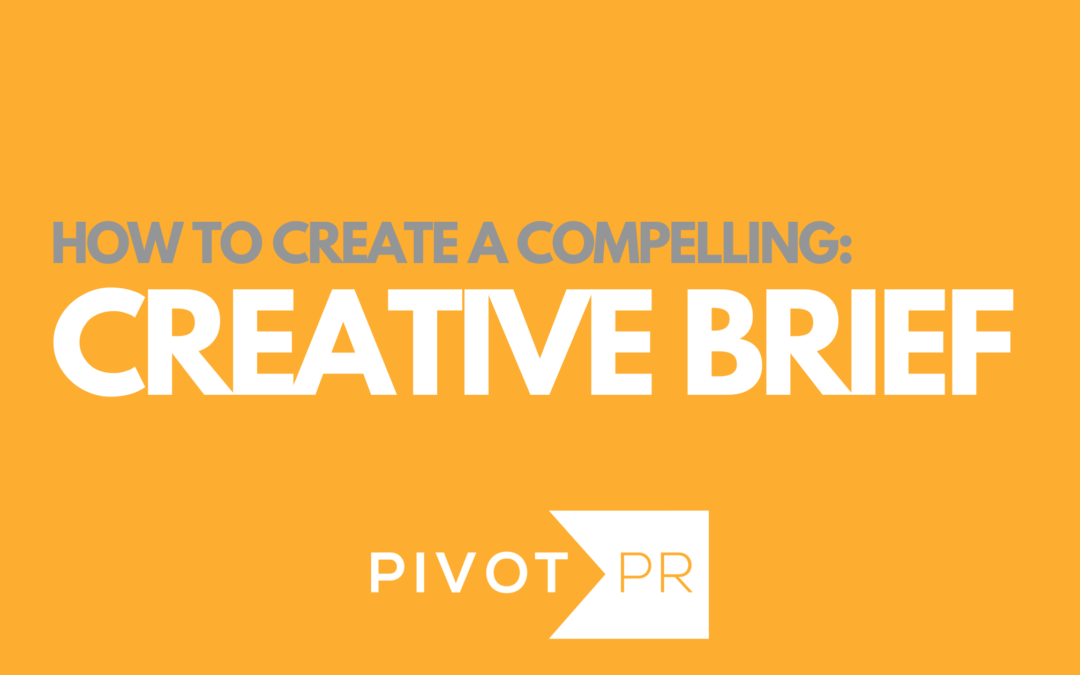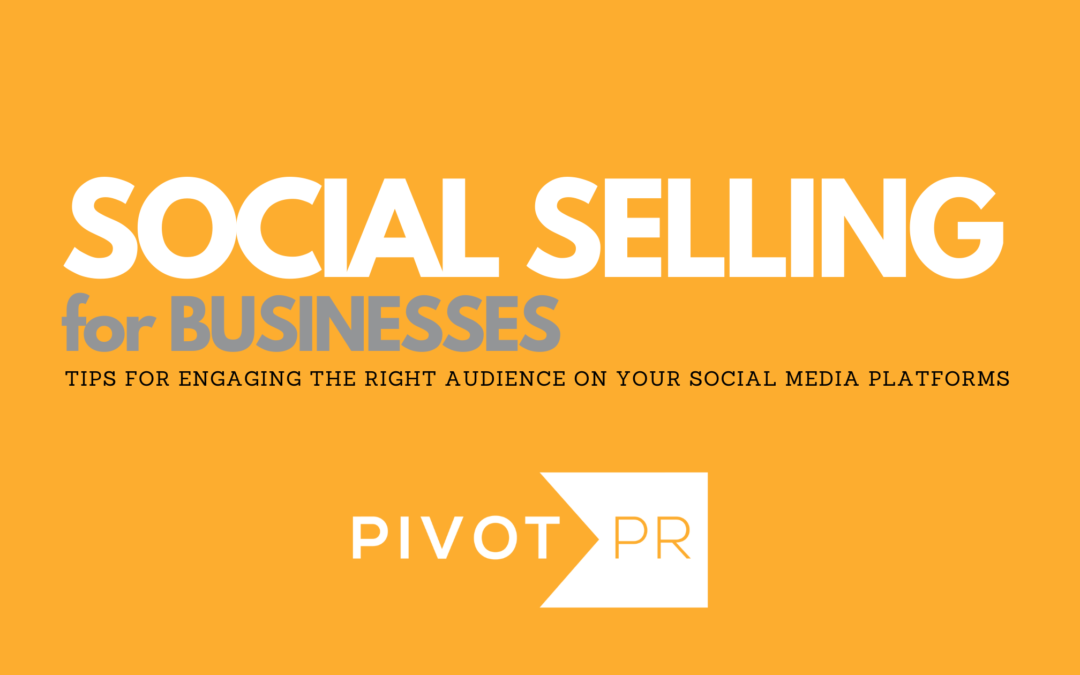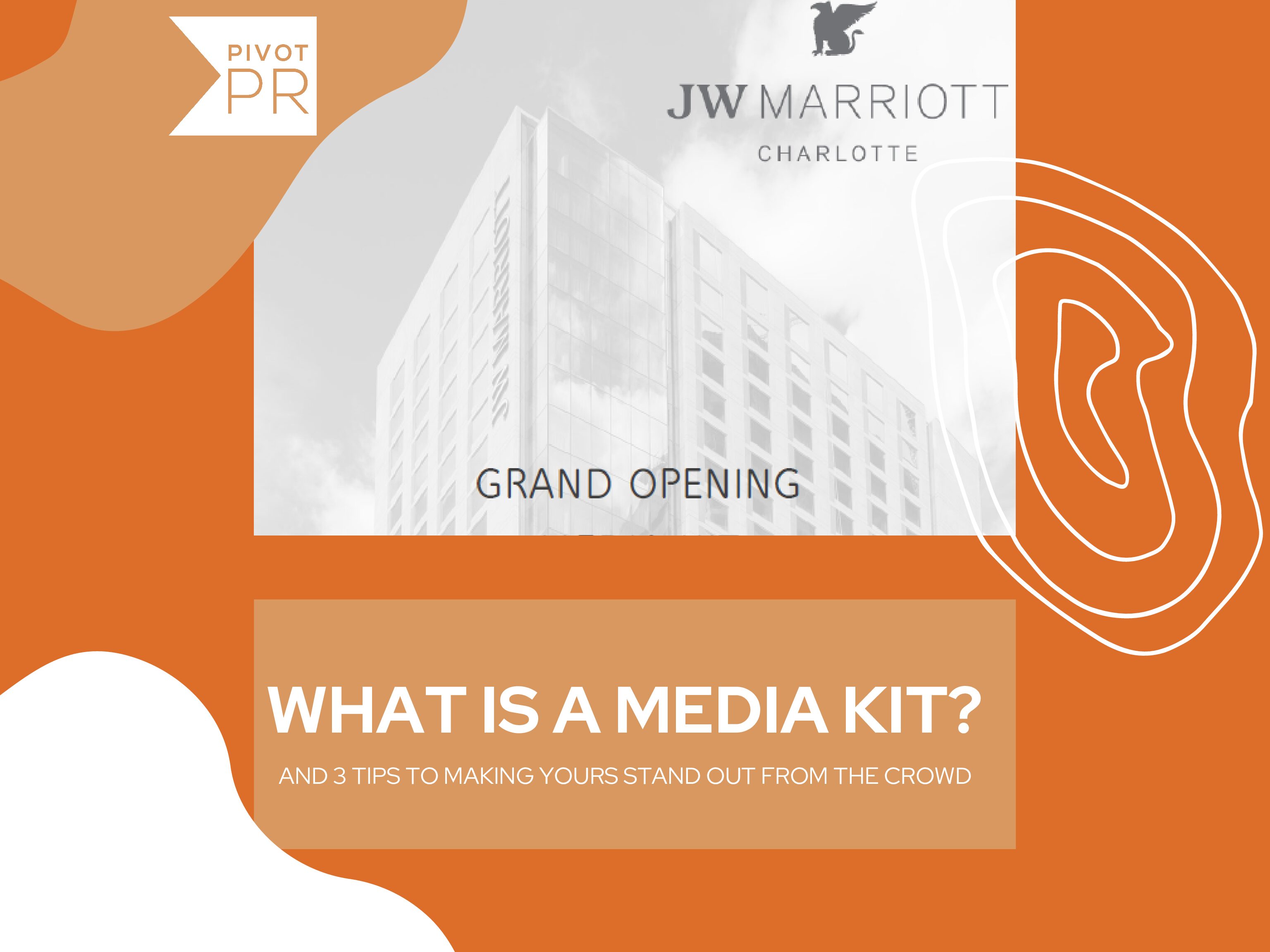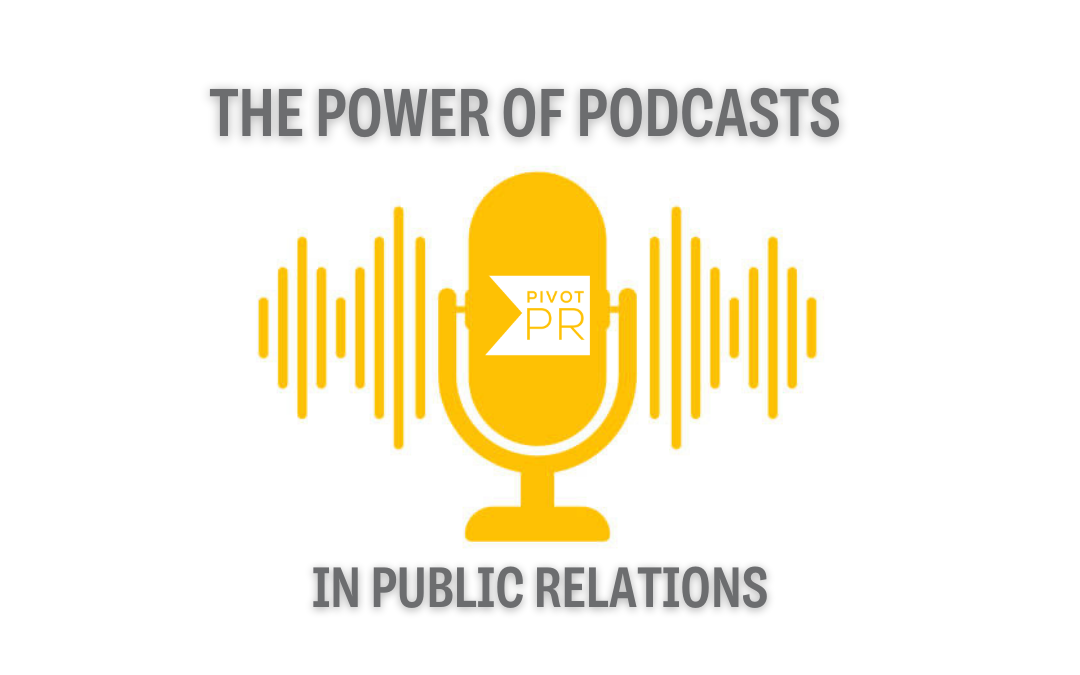
Blog
What is a creative brief and why is it useful?
Creative briefs allow all team members to be on the same page before the launch of a project by connecting creative work to broader goals. By outlining purpose, objectives and expectations before work begins, time is saved and confrontations during the review and approval process are avoided. Creative briefs are especially useful to agencies in understanding and implementing a client’s vision. They aid a wide variety of conceptual projects, including launch campaigns, website development, brochures and online ads on social media.
What does a creative brief contain?
- Title & Description – Provide a title and a short description of the campaign so clients and the creative team understand the intention of the creative work.
- Goals & Objectives – Define the specific business need and what the project will accomplish. Ensure that the listed goals are measurable. By the end of the project, look back at these goals and discern whether you’ve met your objectives.
- Target Audience – Outlining your target audience will help better tailor your project to them. Outline specific insights and demographics including age, gender, income level, marital status and education level. Note the audience’s values, interests, wants and needs. Understanding your audience beforehand will assist your team in relaying your intended message to the right people.
- Messaging & Tone – Clearly establish what messaging you want to deliver to your target audience. When they receive your message, how should they feel, think, want and do? What is their call to action? Include any brand guidelines or where to locate them. Following brand guidelines ensures the tone of your messaging matches that of your brand and keeps your messaging consistent across campaigns.
- Assets & Deliverables – Describe all creative assets and deliverables. Specify asset requirements such as dimensions, number of versions and design elements.
- Stakeholders – Identify all important stakeholders upfront. Cross-functional team collaboration is almost always necessary with creative work, involving more than one department. Each team member should know what they’re individually responsible for.
- Budget – Establishing a budget early on will help you stay in line financially and guide decision-making throughout the project.
- Timeline – Keep your team on track by establishing an early timeline. Note an anticipated start and end date, then fill in as many important dates as possible within. This allows all team members to plan accordingly and will notify you of any potential conflicts.
- Distribution process – Identify how your media assets will be communicated to your audience. Social media, email, blog and paid advertisements are just a few ways to distribute your messages.

Blog
Social media platforms not only keep you connected with family and friends, but can also help you reach more people and grow your brand online. Through social media, you can:
- Observe your competitors and their best practices
- Create content for your target audiences
- Share content like blogs and other media from your own website
- Introduce your products and services
- Increase sales through social selling
Social media has become a vital part of our 21st century lifestyle, with social channels showing no sign of decline in popularity and prominence. In response, it is more important now than ever to plan on utilizing social media as a critical tool in growing a business.
What is social selling?
Social selling is a modern approach to sales that allows brands to hyper-target prospective customers while simultaneously establishing rapport with existing audiences. It focuses on the practice of building relationships through interacting with users and providing relevant, helpful content instead of cold pitching and spamming your messages into the online abyss.
3 Reasons Why Social Selling is Beneficial for Your Brand
- Increases brand visibility – Continuously sharing relevant, helpful content will attract prospective audiences willing to engage with you. No brand visibility means no exposure to potential customers and opportunities.
- Drives higher-quality leads – To go along with brand visibility, higher-quality leads come from investing your time and energy into building genuine connections with prospective audiences and gaining their trust.
- Credibility – Build social credibility within your industry via social media networks to nurture relationships and connect with prospective customers. Position yourself to have influence and increased levels of perceived value among users.
How To Measure Social Selling
The social selling index (SSI) is a metric used to measure the impact of a brand’s social selling efforts. It determines how well you are:
- Establishing a professional brand with a well-managed profile.
- Finding the right people on the platform.
- Sharing relevant, conversation-inspiring content.
- Building and strengthening relationships.
LinkedIn first introduced the concept of the SSI and combines four components to establish a score. To find your LinkedIn SSI score, sign into your account and navigate to your Social Selling Index dashboard.
Twitter is also a great network for social selling. Twitter Lists make it possible to group users together, based on company, industry or geographical location to monitor their specific content. Key Twitter Lists to focus on when social selling on the platform includes existing customers, prospective customers and competitors.
Instagram can be utilized for social selling by tracking engagement with your content relative to your follower count. This can be measured using Sprout Social, a software that allows you to easily manage your social media accounts. Within Sprout, navigate to the Reports tab and under Instagram Reports, click Instagram Business Profiles, where you can find your engagement rate calculated at the bottom of the Overview tab.
Facebook engagement can be measured using Facebook Audience Insights, where the metrics can be found under the Content tab. And in Creator Studio, overall engagement numbers can be found under the Insights tab while the post-level ones can be found under the Published tab.

Blog
Media kits, also known as press kits, are a set of promotional materials assembled by a company to provide basic information about itself to targeted audiences. Materials can consist of images, written content, files and any information related to a company, organization or individual. Designed to summarize a business, product or event, media kits are typically known as a “one stop shop” for media contacts when they need quick access to information.
Businesses can choose to present their media kits as responsive, online press pages or as downloadable presentation decks. No matter what format, they exist as a vital public relations tool to raise awareness, explain services and provide essential information to the media and/or prospective partners.
Key elements of a media kit include:
- Bio – A brief explanation of the company’s history to explain why and how the company was founded.
- Introduction Letter – A pitch to make the case for why the media should write about your company or why the client you’re soliciting should be interested in your services.
- Press Releases/News Clippings – Shows past coverage your company has received.
- FAQ Sheet – Answers the most common questions about your company.
- Samples of Company Work – For example, if you are endorsing a food blog, you might include relevant photography samples, final reports on brand deals, etc.
- Visual Aids – Show your statistics through the use of photos, videos, infographics, etc.
- Contact Information
3 tips for making your media kit stand out:
- Engage Your Audience – Establish credibility instantly with a standout media kit design and compelling headlines and graphics. Keep your pitch concise and get your key messages across quickly. Keep it interesting by avoiding long paragraphs. Opt for text boxes, images, bullets, subheadings and titles to capture and hold attention.
- Focus On Benefits – Forget the fluff. Focus on benefits for the consumer, reporter or client (the why) rather than features of your company (the what) to address the needs of the audience. Clearly explain how your company can best provide solutions to trending issues.
- Be User-Friendly – Ensure your media kit is downloadable, neat and easy to follow. Feature it on your website, located on the Contacts page, Services page or on a dedicated Media page. Include a link to allow the document to be downloaded as a PDF, especially when sending to potential partners.
Want to see a press kit that PIVOT PR has done for a client? JW Marriott Charlotte’s kit can be found HERE.

Blog
For decades, PR professionals have used classic tools such as press releases to get a brand or company’s message out to its publics. But there is an alternative option that is growing in popularity and quickly becoming accessible to millions of listeners around the world – podcasts. It’s time to consider the potential of podcasts to elevate your brand and harness their power to connect new audiences with your products or services.
For those who are unfamiliar, podcasts are on-demand digital audio files that can be streamed or downloaded to your smartphone, tablet or laptop (many at no cost). They are essentially a revitalization of talk radio that is both entertaining, informative and accessible from almost anywhere around the world.
According to Edison research, fifty-seven million Americans tune into podcasts monthly. Audio giants Spotify and Apple Music collectively offer over two million active podcasts in their catalogs. Since they can be accessed at the listener’s convenience, podcasts are a brilliant way to reach a time-starved audience. They allow you to speak directly to listeners while they’re multitasking – checking social media, going on a run or commuting to work.
Additionally, one of the best parts of podcasts is that listeners can search for your episode weeks, months, even years after it’s initially published. Promoting through social media using soundbites, images, snippets and teasers can further amplify your message once it is aired.
Here are a few additional tips to consider when adding podcasts to your communication strategy:
- Do your research. Choosing which podcast to target is very similar to analyzing traditional media. Note the show’s audience and recent conversations, then select the one whose subject matter best aligns with your company or brand’s message.
- Podcast listeners love a good story. Be sure to tie emotion to your message to make it more memorable for the audience.
- Focus on the customer. Discuss trends and research in your industry that the audience is likely to be familiar with. Even better, try examining industry problems where you can then tie your product or service in as a solution.
If you are interested in finding a podcast to participate in, let us know. We can work with you to find the best platform and audience to relay your message exactly as you intended.
Blog
Just before the holidays, Eric had the opportunity to sit down with Cristina Bolling, managing editor of the Charlotte Ledger and former 20-year reporter for the Charlotte Observer. Check out their conversation about a career in Charlotte media!
Tell us about yourself… what brought you to Charlotte?
“I grew up in the D.C. area and attended James Madison University in Virginia. Then I went to graduate school at the Newhouse School at Syracuse University where I got a masters in Newspaper Journalism. From there, I got my first job at the Associated Press in Albany, New York. it was really a great first job for someone in their early to mid-20’s. The AP is a great training ground… they let you loose, learning the essentials of editing, writing, covering the statehouse (George Pataki was governor, Elliot Spitzer was the Attorney General, Hillary Clinton was running for Senate… so I got to have pieces of that). I stayed there for a couple of years then decided, ‘I’m a Virginia girl… it’s too cold!’ I couldn’t take it anymore! So I went looking for journalism jobs nationally, and the Charlotte Observer at that time was really well known for its writing. They would bring in writing coaches from around the country, they would send you to writing conferences… stuff like that. So I came here not knowing anybody. I just thought this would be a good place to stay for a couple years, learn how to write, figure out where else I’d want to go… and that was 20 years ago!“
You had quite the run with the Charlotte Observer over two decades. How did that experience impact your career?
“Everything had I hoped would happen at the observer happened. I received really good coaching. I really feel like I learned to write from some of the top editors in the country. I stayed there for 20 years and I wore a variety of hats. I covered everything from county govt to immigration (I speak Spanish so that was really useful), real estate fashion the arts… so pretty much anything I wanted to write about, I found a way to do it.“
Are there some stories from your time with the Observer that really stand out?
“There are certainly some exciting ones. I covered a few hurricanes out in the Outer Banks, and even rode over the OBX in a Black Hawk helicopter. I really love some of the stories I wrote on the immigration beat. I did a story one time about this choir of Liberian orphan boys who came to sing in Charlotte and wound up all being adopted by families in Union County. Oprah even picked up that story that the Observer had first! I’ve always been a believer that everyone has a story to tell. You just have to ask the right questions and listen. I did cover stories about celebrities or fixtures in the news… but sometimes, its everyday people who have the stories that blow you away.“
How did the opportunity come about to join the Charlotte Ledger? Did that represent a pretty big change career wise?
“This past year (2019), an old Observer colleague – who I started with in the Gastonia bureau 20 year ago – was starting up this newsletter – the Charlotte Ledger. We had stayed in touch, so back in the spring, he invited me to come on as his managing editor. I thought ‘this will be kind of a fun new challenge after doing the same thing for 20 years… this will be fun to try something totally different and help start up a media company.’ It’s been a pretty fun ride since then.“
“When I started at the Observer, it was sort of the heyday of newspapers. We had huge staffs with a lot of local expertise in the room, and it gave me a lot of appreciation for that institutional knowledge. Charlotte is a such a fast-growing city with a lot of newcomers, but it has (like any city) a very deep and interesting history. So spending 20 years on all these different beats, and knowing what stories are being covered and aren’t being covered made me interested to try out a new way of writing about Charlotte without any walls. Tony (Mecia) and I don’t necessarily have any “beats” between the two of us. We consider the whole city to be our fertile stomping grounds to write about whatever we think is interesting. Having built that institutional knowledge working at the Observer, we also know who else has that knowledge. It made it an exciting thing to try at the Ledger.“
How would you describe the Charlotte Ledger’s value proposition? What makes it stand out?
“People frankly don’t have a lot of time to read long stories. They’re choosy on how they consume media. So we try to really prioritize what we write about, and some stories don’t need to be long. Some stories you can tell succinctly… just tell people what they need to know and get out of it. Part of what we bring is a curation, a “not wasting your time” approach to news… satisfying your curiosity, sharing some institutional knowledge that we have, and then letting you move on with your day. And a newsletter format is nice for that. There’s a beginning, a middle, and an end. You get to the end and you feel like you know what you need to know for that day… and you move on.“
What projects are you currently working on that get you excited?
“I actually have a side hustle right now for Charlotte Magazine called You Are Here. Every month, I throw a dart at a map of Mecklenburg County, and wherever the dart lands, I go to that place and I do a story. It’s so fun for me because it confirms what I’ve always known – literally anywhere has a story. It started in January 2020, and I’ve done maybe 14 of them so far. That feature has taken me to an old, abandoned airstrip out in east Charlotte where I interviewed a man who used to run planes there. It’s taken me to little neighborhoods where kids are growing up together like Hidden Valley where people have seen that neighborhood completely transform. I love hard news, breaking news, gritty news… but I also love going to a place and learning everything I can about the people who live there or the history of that location. I just think everyone has a story to tell. I’m just an insanely curious person!“
You’re Almost a year in now at the Charlotte Ledger… how has that sense of curiosity manifested itself differently now as a manager of a newsletter vs a reporter at a newspaper?
“Charlotte is a growing city and its media landscape has changed a lot. Newsrooms aren’t as big as they used to be and just can’t get to everything like they once did. We try to figure out what some of the big stories are and tell them in a way that they aren’t being told right now. We ask ourselves what are we curious about when it comes to a story, then we set out to answer that question.“
How to you collaborate with other writers?
“We do rely heavily on former Observer writers who we’ve worked with in the past. Back in the Observer’s heyday, there were so many good beat writers who specialized in religion and food and restaurants, politics, business… stuff like that. So we do lean on them as freelancers because we know that they know so much. Who better to tell that type of story than someone who made that their career? We also have relationships with some people in the PR industry who are just good writers and know how to tell a story. We’re definitely growing our freelance platform. Tony and I still write most of the stories for the Ledger, but it is fun to work with people you know who do good work and have interesting things to say.“
How has COVID effected your day to day/the Ledger?
“It’s interesting… we talk often about what we think we would be writing about right now if it wasn’t for COVID. I guess what I miss most is going out on stories… you get a lot more out of meeting with someone. Noticing what’s on the wall of someone’s office or going into their home. You can’t replicate that, but you make the best with what you have. COVID has really presented a challenge in focusing, there’s just so many different directions you could go. It’s almost been more of an issue of trying to whittle down and put your horse blinders on to focus on what story we need to tell or what has the biggest impact.”
What’s on the horizon for the Charlotte Ledger?
“We’re always planning for the future, but it’s hard to imagine past the end of our noses sometimes! We’re a subscription-based publication… we don’t do a lot of advertising. Our growth has surpassed what we had planned for 2020 for sure. We really rely on subscribers to help spread the word about us, and the future looks really good. We would like to become one of those news outlets that when you talk about Charlotte media, [the Charlotte Ledger] rolls of your tongue. I think we’re on our way to being that. We are relatively new, but if you’re looking for honest, reliable, and essential news… we hope you’ll come to us.”
To learn more about the Charlotte Ledger, be sure to subscribe to the daily newsletter!



